Cats
Unveiling the Alluring Tonkinese Cat: A Feline Marvel

Unveiling the Alluring Tonkinese Cat: A Feline Marvel
In the vast kingdom of feline companions, the Tonkinese cat reigns supreme, blending charm, intelligence, and an exquisite appearance.
These captivating felines are a treasure trove of endearing traits and unique characteristics. Join us on a fascinating journey to explore the Tonkinese cat breed in all its glory.
From their history and origins to their personality quirks and care requirements, we’ll leave no whisker unturned.
Origins and History of the Tonkinese Cat: A Tale of Two Breeds
In the captivating world of feline companions, the Tonkinese cat’s origins and history stand out as a compelling story of crossbreeding and evolution. To truly appreciate these charming felines, one must delve into the enchanting narrative of how they came to be.

The Birth of a Hybrid
The Tonkinese cat’s story begins in North America in the mid-20th century when a group of passionate cat breeders embarked on a mission to create a breed that combined the best qualities of two beloved feline breeds—the Siamese and the Burmese.
This ambitious endeavor aimed to produce a cat that possessed not only the striking looks of its Siamese ancestors but also the charming personality traits of the Burmese.
The Role of the Siamese
The Siamese cat, with its distinctive blue almond-shaped eyes, elegant body, and striking coat pattern, played a crucial role in the creation of the Tonkinese breed.
Siamese cats were known for their vocal nature and striking contrast between their creamy bodies and dark extremities. These captivating features became an integral part of the Tonkinese’s genetic makeup.
The Charm of the Burmese
On the other side of the genetic equation, the Burmese cat contributed its own set of enchanting qualities. Renowned for their gentle and affectionate nature, Burmese cats added a delightful dose of sweetness and sociability to the Tonkinese.
With their warm, expressive eyes and lush, satiny coats, Burmese cats left an indelible mark on the Tonkinese’s temperament and appearance.
Crossbreeding and Development
The breeding process began with carefully selected Siamese and Burmese cats, chosen for their exceptional traits and genetic compatibility. Through generations of meticulous crossbreeding, the Tonkinese breed started to take shape.
It was crucial to strike a balance between the distinctive characteristics of both parent breeds, resulting in cats that embodied the best of both worlds.
Recognition and Popularity
As the Tonkinese breed continued to develop, it started gaining recognition and popularity among cat enthusiasts. In 1971, the Canadian Cat Association (CCA) officially recognized the breed.
This recognition marked a significant milestone in the Tonkinese’s journey, further solidifying its status as a unique and cherished breed.
A Modern Marvel
Today, the Tonkinese cat stands as a testament to the dedication and passion of breeders who sought to create a feline companion like no other.
With its captivating blend of Siamese elegance and Burmese charm, the Tonkinese has won the hearts of cat lovers worldwide.
Its history is a reminder of the endless possibilities that arise when the worlds of two exceptional breeds collide, resulting in a truly remarkable and beloved feline companion.
Tonkinese: A Symphony of Colors
The Tonkinese cat is a living, breathing masterpiece of color and pattern, a canvas painted with the vibrant and harmonious hues of nature.

When you think of a Tonkinese, you envision an exquisite blend of colors that make them stand out among other feline companions. In this section, we will explore the captivating coat colors and patterns that adorn these enchanting cats.
The Tonkinese Coat Palette
Tonkinese cats come in a palette of stunning coat colors, each with its own unique charm and allure. The most common coat colors for Tonkinese cats are:
- Natural: The “Natural” coat is a warm and inviting shade that resembles the golden sands of a tranquil beach. It’s a beautiful balance of creamy beige with subtle hints of peach and apricot. The Natural Tonkinese exudes a sense of serenity and elegance.
- Champagne: Champagne, as the name suggests, brings to mind a glass of celebratory bubbly. This coat color is a delicate and pale fawn, reminiscent of the soft glow of a candlelight dinner. Champagne Tonkinese cats have a certain sophistication and grace.
- Blue: The “Blue” Tonkinese boasts a cool and calming coat color. It is a silvery gray-blue that evokes the tranquility of a misty morning by the sea. Blue Tonkinese cats carry an air of mystery and intrigue.
- Platinum: Platinum is the embodiment of pure luxury. This coat color is a lustrous, icy white with a hint of silver. It glistens like freshly fallen snow in the moonlight. Platinum Tonkinese cats are the epitome of elegance.
The Art of Tonkinese Patterns
Beyond their captivating colors, Tonkinese cats also showcase beautiful patterns that add depth and character to their coats. The two primary patterns you’ll encounter in Tonkinese cats are:
- Mink: The “Mink” pattern is a mesmerizing fusion of dark and light shades. It features dark ears, face mask, paws, and tail, with a lighter body. This pattern gives Tonkinese cats a distinct contrast that highlights their facial expressions and body contours.
- Point: The “Point” pattern is a nod to their Siamese heritage. It showcases a lighter body with darker points on the ears, face, paws, and tail. This pattern creates an elegant and regal appearance, emphasizing their striking features.
The Enchantment of Aqua Eyes
In addition to their remarkable coat colors and patterns, Tonkinese cats are known for their captivating aqua-colored eyes. These eyes are like pools of sparkling water, reflecting their intelligence, curiosity, and affection.
It’s as if their eyes hold the secrets to the boundless charm of the Tonkinese breed.
Personality Traits and Temperament of Tonkinese Cats
Understanding the personality traits and temperament of Tonkinese cats is key to comprehending why they make exceptional companions.
These cats are a harmonious blend of the Siamese and Burmese breeds, resulting in a feline friend with a distinctive set of characteristics.
In this section, we’ll delve into the captivating personality traits and temperament that define the Tonkinese breed.
Playful and Energetic
Tonkinese cats are known for their boundless energy and playful nature. They remain kittens at heart throughout their lives, eagerly engaging in games and interactive play.
Be prepared for endless hours of fun and laughter as they chase toys, play hide and seek, and keep the household entertained.
Affectionate and Loving
One of the most endearing qualities of Tonkinese cats is their affectionate nature. They have a deep desire for companionship and thrive on forming strong bonds with their human family members.
Expect frequent head bumps, purring, and cuddle sessions as they express their love and affection.
Vocal and Expressive
Tonkinese cats are notably vocal and enjoy “talking” to their humans. They use a range of vocalizations to convey their feelings, whether it’s a soft and gentle meow to ask for attention or a more insistent tone when they want to play.
Their expressive nature adds character and charm to your home.
Social Butterflies
These cats are true extroverts. They revel in social interactions and are happiest when they’re in the company of their family. Tonkinese cats are not inclined to solitude and prefer being part of the daily activities in the household.
Intelligent and Curious
Tonkinese cats exhibit a high level of intelligence and curiosity. They enjoy puzzle toys and interactive games that challenge their minds. Their inquisitive nature means they’ll often investigate new objects or areas in your home.
Adaptable and Easygoing
Tonkinese cats are highly adaptable and tend to adjust well to different living environments. Whether you live in a small apartment or a larger house, these cats will find their place and make themselves at home.
Their easygoing nature makes them versatile pets.
People-Oriented
These feline companions are undeniably people-oriented. They are attuned to the emotions of their human family members and are known to provide comfort and support when needed.
Whether you’re happy, sad, or simply in need of company, your Tonkinese cat will be there.
Dog-Friendly
Tonkinese cats often get along well with dogs, thanks to their social and friendly disposition. They are open to forming strong bonds with canine family members, making them an excellent choice for households with both cats and dogs.
9. Child-Friendly
Tonkinese cats are generally patient and playful, making them suitable for families with children. They can withstand the energy of active kids and often participate in games, creating lasting childhood memories.
Independent Yet Affectionate
While they enjoy human company, Tonkinese cats also possess an independent streak. They are content to entertain themselves when you’re busy but will eagerly seek your attention when you’re available.
Caring for Your Tonkinese: A Guide to Happy and Healthy Living
Caring for a Tonkinese cat is a rewarding experience, as these feline companions bring joy and warmth to your home. To ensure a happy and healthy life for your Tonkinese, it’s essential to provide them with proper care, nutrition, and attention.
In this section, we’ll explore the key aspects of caring for your Tonkinese cat.
Nutrition and Diet
A balanced and nutritious diet is the foundation of your Tonkinese cat’s well-being. Ensure you provide high-quality cat food that meets their dietary requirements.
Tonkinese cats can be prone to obesity, so it’s vital to monitor their food intake and avoid overfeeding. Consult with your veterinarian for specific dietary recommendations based on your cat’s age and activity level.
Grooming and Hygiene
Tonkinese cats have short, fine coats that are relatively low-maintenance. Regular brushing will help reduce shedding and keep their coat in excellent condition.
Additionally, check their ears and teeth regularly and clean them as needed to prevent any issues. Trim their nails as required to keep them comfortable.
Regular Veterinary Care
Routine visits to the veterinarian are crucial to your Tonkinese cat’s health. Vaccinations, preventive measures for parasites, and regular health check-ups should be a part of their healthcare regimen. Discuss a vaccination schedule and preventive care plan with your vet.
Exercise and Play
Tonkinese cats are known for their playful nature and boundless energy. Engage them in interactive play sessions to keep them physically and mentally stimulated. Provide toys, climbing structures, and scratching posts to satisfy their need for activity.
Litter Box Maintenance
Maintain a clean litter box to ensure your Tonkinese cat’s comfort. These cats are usually diligent about using the litter box, but regular cleaning and changing of the litter are essential. Choose a location for the litter box that offers privacy and accessibility.
Social Interaction
Tonkinese cats thrive on social interaction. Spend quality time with them, engage in conversations, and offer affection. They enjoy being a part of the family’s daily activities and appreciate companionship.
Safety and Environmental Enrichment
Create a safe environment for your Tonkinese cat. Remove any hazards, toxic plants, or small objects they might swallow. Additionally, provide window perches and safe outdoor spaces for them to enjoy the sights and sounds of the world outside.
Training and Behavioral Guidance
Tonkinese cats are intelligent and can be trained for basic commands and behaviors. Use positive reinforcement techniques for training and to address any behavioral issues. Be patient and consistent in your approach.
Regular Health Monitoring
Keep an eye on your Tonkinese cat’s overall health. Watch for any changes in behavior, appetite, or litter box habits, as these can be early indicators of health issues. Promptly consult your veterinarian if you notice any concerns.
Love and Affection
Finally, shower your Tonkinese cat with love and affection. These cats have a deep need for companionship and thrive on the love and attention of their human family. Your emotional connection is a vital part of their well-being.
Conclusion
In the enchanting world of feline companions, the Tonkinese cat stands out as a gem. With their mesmerizing coat colors, affectionate nature, and adaptability to family life, they make for the ideal feline friend.
Providing them with love, care, and a playful environment ensures a harmonious and fulfilling life for both you and your Tonkinese companion.
Questions People Also Ask: (FAQs)
To provide you with the most comprehensive guide, we’ve gathered answers to some of the most commonly asked questions about Tonkinese cats.
Are Tonkinese cats hypoallergenic?
While no cat breed is entirely hypoallergenic, many allergy sufferers find that they tolerate Tonkinese cats well due to their short, fine coats and lower allergenic protein levels.
How active are Tonkinese cats?
Tonkinese cats are known for their high energy levels. They love to play and engage in interactive activities. Providing toys and playtime is essential to keep them happy.
Do Tonkinese cats require special grooming?
Their short coat is relatively low-maintenance. Regular brushing will help reduce shedding, and occasional nail trimming and dental care are essential.
Are Tonkinese cats prone to specific health issues?
While generally healthy, Tonkinese cats can be prone to certain conditions like gingivitis and respiratory issues. Regular vet check-ups are crucial for their well-being.
What’s the average lifespan of a Tonkinese cat?
Tonkinese cats have a life expectancy of around 12 to 16 years, but with proper care, some can even live longer.
We appreciate you for taking the time to read this article!
Finally, we hope you found this article interesting? And what do you think about ”Unveiling the Alluring Tonkinese: A Feline Marvel!?”
Please feel free to share or inform your friends about this article and this site, thanks!
And let us know if you observe something that isn’t quite right.
Cats
Clever Cats: Breeds That Learn Fast
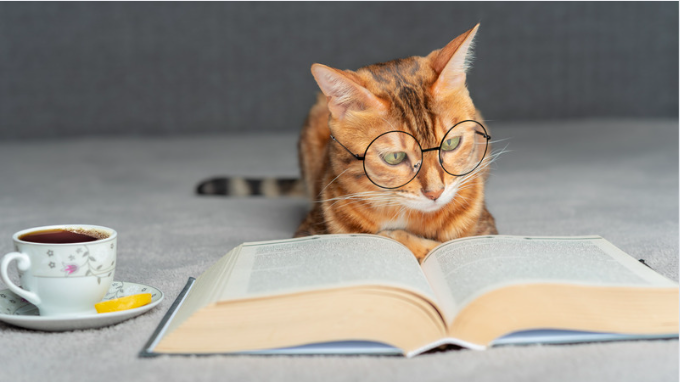
Clever Cats: Breeds That Learn Fast
Cats have always fascinated us with their agility, independence, and sometimes enigmatic behavior. Among the vast array of feline breeds, some stand out for their remarkable intelligence and ability to learn quickly.
In this article, we will delve into the world of these exceptional cat breeds, exploring their unique characteristics, training capabilities, and what makes them such quick learners.
Whether you’re a seasoned cat owner or considering adopting a new feline friend, this comprehensive guide will help you understand the breeds that are not only intelligent but also a joy to train.
Why Intelligence Matters in Cats
Understanding Feline Intelligence
Feline intelligence is a multi-faceted trait that encompasses problem-solving abilities, social learning, and adaptability. Unlike dogs, cats often showcase their intelligence in more subtle ways, such as manipulating objects to get what they want or learning routines and commands.
Benefits of Owning Intelligent Cats
Owning an intelligent cat comes with several benefits. These cats are more interactive and engaging, making them excellent companions. They can learn tricks, follow commands, and even understand basic household rules, which makes living with them more enjoyable and less challenging.
Top Cat Breeds Known for Their Intelligence
Abyssinian
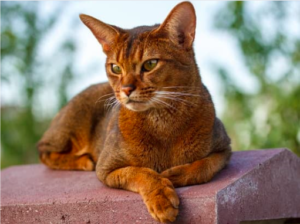
Overview
The Abyssinian is often hailed as one of the smartest cat breeds. Known for their curiosity and playful nature, Abyssinians are quick learners who thrive on mental stimulation.
Training and Activities
Abyssinians are highly trainable and enjoy interactive toys and puzzle feeders. They can learn tricks such as fetching and even walking on a leash. Their love for heights means they appreciate cat trees and climbing structures.
Siamese
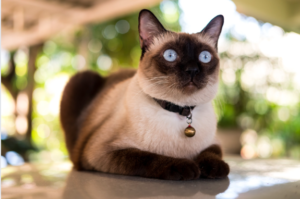
Overview
Siamese cats are not only intelligent but also highly vocal and sociable. They form strong bonds with their owners and are always eager to engage in activities.
Training and Activities
Siamese cats are quick to learn tricks and commands. They enjoy interactive play and can be trained to perform simple tasks like opening doors or retrieving items. Their vocal nature also makes them responsive to verbal cues.
Bengal
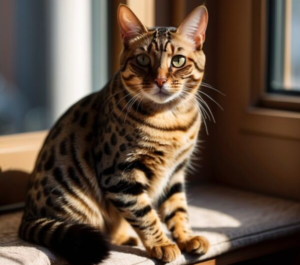
Overview
Bengals are known for their striking appearance and high energy levels. Their intelligence is reflected in their ability to solve problems and learn complex tasks.
Training and Activities
Bengals enjoy activities that challenge their minds, such as agility courses and puzzle toys. They can be trained to walk on a leash and perform tricks. Providing them with interactive playtime helps in channeling their energy positively.
Burmese
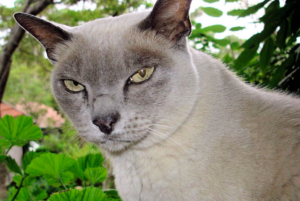
Overview
Burmese cats are affectionate, people-oriented, and intelligent. They enjoy being involved in family activities and can be trained to follow various commands.
Training and Activities
Burmese cats are quick learners and respond well to positive reinforcement. They enjoy learning tricks, playing fetch, and interactive games that stimulate their minds.
Scottish Fold
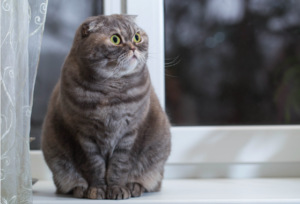
Overview
Scottish Folds are known for their distinctive folded ears and sweet demeanor. Despite their calm appearance, they are intelligent and can learn quickly.
Training and Activities
Scottish Folds enjoy interactive toys and games. They can learn tricks and commands and appreciate routines that keep their minds engaged.
Training Tips for Intelligent Cats
Start Early
Begin training your cat as early as possible. Kittens are more receptive to learning new behaviors and routines.
Use Positive Reinforcement
Reward your cat with treats, praise, or playtime whenever they successfully perform a desired behavior. Positive reinforcement strengthens the association between the action and the reward.
Keep Sessions Short and Fun
Cats have shorter attention spans than dogs, so keep training sessions brief and enjoyable. Incorporate playtime to make learning fun for your cat.
Be Patient and Consistent
Patience and consistency are key when training cats. Repeat commands and routines regularly, and avoid punishing your cat for mistakes. Consistency helps reinforce learning and builds trust.
Challenges of Training Intelligent Cats
Independence and Stubbornness
Intelligent cats can sometimes be independent and stubborn. They might choose to ignore commands if they are not in the mood, so it’s important to understand their behavior and work with it.
Need for Mental Stimulation
Highly intelligent cats require constant mental stimulation. Boredom can lead to behavioral issues, so ensure they have plenty of toys, activities, and interaction to keep their minds engaged.
Managing High Energy Levels
Breeds like Bengals have high energy levels that need to be managed. Providing them with enough physical and mental exercise is crucial to prevent destructive behavior.
Living with Intelligent Cats
Creating an Enriched Environment
An enriched environment is essential for intelligent cats. This includes a variety of toys, climbing structures, scratching posts, and interactive feeders to keep them stimulated.
Social Interaction
Intelligent cats thrive on social interaction. Spend quality time playing, training, and simply bonding with your cat to ensure they feel valued and engaged.
Understanding Their Needs
Each intelligent breed has its own unique needs and preferences. Understanding these and catering to them will help you build a strong and positive relationship with your cat.
Conclusion
Owning an intelligent cat can be an incredibly rewarding experience. These quick learners bring joy, challenge, and companionship to their owners. By understanding their unique characteristics and providing the right environment and training, you can foster a deep and fulfilling relationship with your feline friend.
Whether you choose an Abyssinian, Siamese, Bengal, Burmese, or Scottish Fold, you’re sure to enjoy the remarkable intelligence and personality they bring into your home.
Frequently Asked Questions (FAQs)
What makes a cat breed intelligent?
Intelligent cat breeds often show high levels of problem-solving abilities, adaptability, and social learning. They can quickly learn commands, tricks, and routines.
Can all cats be trained?
While some breeds are more receptive to training than others, all cats can be trained to some extent. Patience, consistency, and positive reinforcement are key to successful training.
What are the best toys for intelligent cats?
Interactive toys, puzzle feeders, and climbing structures are ideal for intelligent cats. These toys provide mental stimulation and keep them engaged.
How do I keep my intelligent cat from getting bored?
Provide a variety of toys, engage in regular playtime, and introduce new activities regularly. Rotating toys and creating an enriched environment also help prevent boredom.
Are intelligent cats more difficult to care for?
Intelligent cats can be more demanding in terms of mental stimulation and interaction. However, with the right approach and environment, they can be delightful companions.
We appreciate you for taking the time to read this article!
Finally, we hope you found this article interesting? And what do you think about ”Clever Cats: Breeds That Learn Fast!?”
Please feel free to share or inform your friends about this article and this site, thanks!
And let us know if you observe something that isn’t quite right.
Cats
The Enchanting Scottish Fold: A Guide to the Adorable Feline with Folded Ears
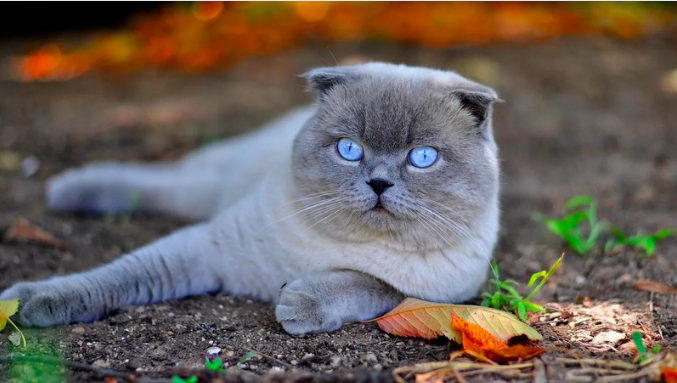
The Enchanting Scottish Fold: A Guide to the Adorable Feline with Folded Ears
Welcome to the world of the Scottish Fold cat, where charm and curiosity meet in an irresistibly adorable package. With their distinctive folded ears and sweet expression, Scottish Folds have captured the hearts of cat lovers around the world. Originally hailing from Scotland, these cats are known for their gentle demeanor, playful nature, and loving personality.
In this comprehensive guide, we will delve into the fascinating world of Scottish Fold cats, exploring their history, physical characteristics, personality traits, and care requirements. Whether you’re a seasoned cat owner or considering adding a feline friend to your family, the Scottish Fold’s unique charm and affectionate nature make them a delightful addition to any home. Join us as we unravel the enchanting tale of the Scottish Fold cat and discover why they are such beloved companions.
Fold
Overview
The Scottish Fold cat is a charming and distinctive breed known for its unique folded ears and sweet expression. Originating from Scotland in the 1960s, these cats have captured the hearts of many with their endearing appearance and affectionate nature. Scottish Folds are known for their gentle and loving temperament, making them wonderful companions for families and individuals alike.
History and Origins
The Scottish Fold breed traces its roots back to a white barn cat named Susie, who was found in Scotland in the early 1960s. Susie had a unique genetic mutation that caused her ears to fold forward, giving her an owl-like appearance. This trait was passed down to her kittens, and thus, the Scottish Fold breed was born. The breed quickly gained popularity for its distinctive look and friendly demeanor, and it was officially recognized by cat registries in the 1970s.
Physical Characteristics
- Folded Ears: The most distinctive feature of the Scottish Fold is its folded ears, which give the cat a sweet and owl-like appearance. Not all Scottish Folds have folded ears; some may have straight ears, known as “straights,” which are also common in the breed.
- Coat and Colors: Scottish Folds can have either a short or long coat, both of which are dense and plush. They come in a variety of colors and patterns, including tabby, tortoiseshell, and solid colors like white, black, and blue.
- Body Structure: Scottish Folds are medium-sized cats with a rounded appearance. They have sturdy bodies, round faces, and large, expressive eyes that give them a sweet and gentle expression.
Personality and Behavior
Scottish Folds are known for their calm and laid-back demeanor. They are affectionate cats that enjoy being around people and are often described as “lap cats” due to their love of cuddling. They are also known for their playful nature and enjoy interactive toys and games. Scottish Folds are generally good with children and other pets, making them a great choice for families.

Health and Care
- Ear Care: Due to their folded ears, Scottish Folds may be prone to ear infections. It’s important to regularly check and clean their ears to prevent issues.
- Grooming: Scottish Folds have dense coats that require regular grooming to prevent matting and tangling. Weekly brushing is usually sufficient to keep their coat in good condition.
- Health Concerns: Scottish Folds are generally healthy, but they may be prone to certain genetic conditions, including a skeletal disorder known as osteochondrodysplasia. Responsible breeding practices can help minimize the risk of these health issues.
Training and Activities
Scottish Folds are intelligent cats that can be trained to perform tricks and commands. They enjoy interactive play and benefit from toys that stimulate their minds and bodies. Providing them with scratching posts and other outlets for their natural behaviors can help keep them happy and healthy.
Compatibility with Families and Other Pets
Scottish Folds are known for their gentle and affectionate nature, making them great companions for families. They are good with children and other pets, including dogs, and can adapt well to different environments. Their loving and sociable nature makes them a popular choice for households looking for a friendly and affectionate pet.
Conclusion
The Scottish Fold cat is a unique and charming breed known for its folded ears and sweet expression. With their gentle demeanor and affectionate nature, Scottish Folds make wonderful companions for families and individuals alike. Whether you’re looking for a lap cat to cuddle with or a playful friend to keep you entertained, the Scottish Fold cat is sure to bring joy and companionship to your home.
FAQs about Scottish Fold Cats
Why do Scottish Folds have folded ears?
Scottish Folds have a genetic mutation that affects the cartilage in their ears, causing them to fold forward. This unique trait gives them their distinctive appearance.
Are Scottish Folds prone to ear problems due to their folded ears?
Yes, Scottish Folds may be more prone to ear infections due to the fold in their ears, which can trap dirt and moisture. Regular cleaning and monitoring of their ears can help prevent issues.
Do Scottish Folds have any health issues associated with their folded ears?
Scottish Folds may be prone to a condition called osteochondrodysplasia, which affects the development of their cartilage and bones. Responsible breeding practices can help reduce the risk of this condition.
Are Scottish Folds good with children and other pets?
Scottish Folds are known for their gentle and friendly nature, making them good companions for families with children and other pets. They enjoy socializing and being part of the family.
Do Scottish Folds require a lot of grooming?
Scottish Folds have dense coats that require regular grooming to prevent matting and tangles. Weekly brushing is recommended to keep their coat in good condition.
We appreciate you for taking the time to read this article!
Finally, we hope you found this article interesting? And what do you think about ”The Enchanting Scottish Fold: A Guide to the Adorable Feline with Folded Ears!?”
Please feel free to share or inform your friends about this article and this site, thanks!
And let us know if you observe something that isn’t quite right.
Cats
The Enchanting Burmese Cat: Affectionate, Playful, and Loyal
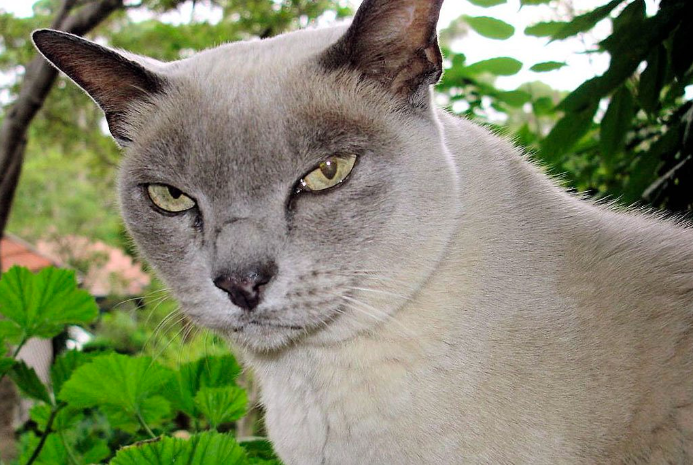
The Enchanting Burmese Cat: Affectionate, Playful, and Loyal
Enter the world of the Burmese cat, where elegance meets affection in a charming feline companion. Originating from the temples of Burma, these cats have captured the hearts of cat lovers worldwide with their striking appearance and loving nature. With their sleek coats, expressive eyes, and playful demeanor, Burmese cats are not just pets; they are cherished members of the family.
In this comprehensive guide, we delve into the captivating world of Burmese cats, exploring their history, physical characteristics, personality traits, and care requirements. Whether you’re a seasoned cat owner or considering adding a feline friend to your family, the Burmese cat’s unique blend of beauty, intelligence, and affection is sure to captivate you. Join us as we unravel the enchanting tale of the Burmese cat and discover why they are such beloved companions.
Burmese
Overview
The Burmese cat is a breed known for its striking appearance and affectionate nature. Originating from Burma (now Myanmar), these cats are renowned for their sleek, muscular bodies, expressive eyes, and silky coats. Burmese cats are often described as “people-oriented,” as they form strong bonds with their human companions and enjoy being part of the family. Their playful and curious nature makes them delightful companions for both children and adults alike.
History and Origins
The history of the Burmese cat can be traced back to ancient Burma, where they were considered sacred and kept by monks in temples. They were later brought to the West in the early 20th century and quickly gained popularity for their striking appearance and affectionate personality. The breed has since become a favorite among cat enthusiasts worldwide, known for its loving and loyal nature.
Physical Characteristics
- Coat and Colors: Burmese cats have short, sleek coats that lie close to the body. They come in a variety of colors, including sable, champagne, blue, and platinum. The coat is soft and silky to the touch, adding to the breed’s overall charm.
- Body Structure: Burmese cats are medium-sized with a muscular build. They have rounded heads, large, expressive eyes, and short, straight noses. Their compact bodies give them a sturdy appearance, and they move with grace and agility.
- Eyes and Ears: Their eyes are one of their most striking features, being large, expressive, and usually a deep, rich color that complements their coat. Their ears are medium-sized, slightly rounded at the tips, and set wide apart on the head.
Personality and Behavior
Burmese cats are known for their affectionate and sociable nature. They are often described as “dog-like” due to their tendency to follow their owners around the house and seek out human companionship. They are also highly intelligent and enjoy interactive play, making them great companions for families with children or other pets.
In addition to their affectionate nature, Burmese cats are also known for their vocalizations. They have a soft, sweet voice that they use to communicate with their owners, often engaging in “conversations” and expressing their needs and desires.
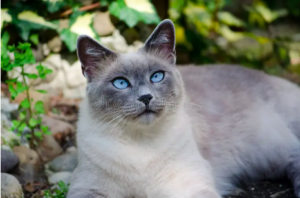
Health and Care
- Grooming: Burmese cats have short coats that require minimal grooming. Weekly brushing is usually sufficient to remove loose hair and keep their coat shiny. They also benefit from regular dental care to prevent oral health issues.
- Diet: A high-quality, balanced diet is essential for maintaining the health and vitality of Burmese cats. They should be fed a diet that is appropriate for their age, size, and activity level to ensure they receive the nutrients they need.
- Health Concerns: Burmese cats are generally healthy, but they can be prone to certain genetic conditions such as hypertrophic cardiomyopathy (HCM) and diabetes. Regular veterinary check-ups and a healthy diet can help manage these risks.
Training and Activities
Burmese cats are intelligent and can be trained to perform various tricks and commands. They enjoy interactive play and thrive on mental stimulation. Providing them with toys, puzzle feeders, and opportunities for play can help keep them entertained and prevent boredom.
Compatibility with Families and Other Pets
Burmese cats are known for their loving and social nature, making them great companions for families. They get along well with children and other pets, including dogs, as long as they are properly introduced. Their affectionate demeanor and playful nature make them a popular choice for households looking for a friendly and engaging pet.
Conclusion
The Burmese cat is a breed beloved for its affectionate nature, striking appearance, and playful personality. Whether you are looking for a loyal companion or a playful friend, the Burmese cat is sure to bring joy and warmth to your home. With their loving nature and sociable demeanor, Burmese cats make wonderful pets for families and individuals alike, enriching their lives with their presence and affection.
FAQs about Burmese Cats
What is the temperament of a Burmese cat like?
Burmese cats are known for their affectionate and social nature. They are often described as “dog-like” due to their loyalty and tendency to follow their owners around the house. They enjoy being involved in family activities and form strong bonds with their human companions.
Are Burmese cats good with children and other pets?
Yes, Burmese cats are generally good with children and other pets. They are playful and enjoy interactive play, making them great companions for families with children. They also get along well with other pets, including dogs, especially if they are introduced properly.
Do Burmese cats require a lot of grooming?
Burmese cats have short, sleek coats that require minimal grooming. Weekly brushing is usually sufficient to remove loose hair and keep their coat shiny. They also benefit from regular dental care to prevent oral health issues.
Are Burmese cats vocal?
Burmese cats are known for their soft, sweet voice, but they are not excessively vocal. They use their voice to communicate with their owners, often engaging in “conversations” and expressing their needs and desires.
What kind of environment is best for a Burmese cat?
Burmese cats thrive in environments where they have plenty of opportunities for play and interaction. They enjoy being part of the family and should have access to toys, scratching posts, and other enrichment activities. They also enjoy having access to outdoor enclosures or safe outdoor spaces where they can explore and indulge their natural instincts.
We appreciate you for taking the time to read this article!
Finally, we hope you found this article interesting? And what do you think about ”The Enchanting Burmese Cat: Affectionate, Playful, and Loyal!?”
Please feel free to share or inform your friends about this article and this site, thanks!
And let us know if you observe something that isn’t quite right.
-

 Pet Care2 years ago
Pet Care2 years agoThe Best Dog Collars For 2022
-

 Dogs2 years ago
Dogs2 years agoBichon Frise: The Happy, Playful, and Cuddly Companion
-

 Trending Pet Stories1 year ago
Trending Pet Stories1 year ago2023 ‘World’s Ugliest Dog’ Winner: Scooter’s Tale of Resilience
-

 Animals3 years ago
Animals3 years agoAre There Animals Having Down Syndrome?
-

 Pets2 years ago
Pets2 years agoThe Fascinating World Of The Red Chameleon
-

 Dogs3 years ago
Dogs3 years agoTop 10 Most Popular Dog Breeds According To AKC.
-

 Dogs3 years ago
Dogs3 years ago21 Dog Breeds That Resemble Bears Or Teddy Bears!
-

 Dogs3 years ago
Dogs3 years agoEskimo Dogs from Canada – What Are They? – Find Out!








